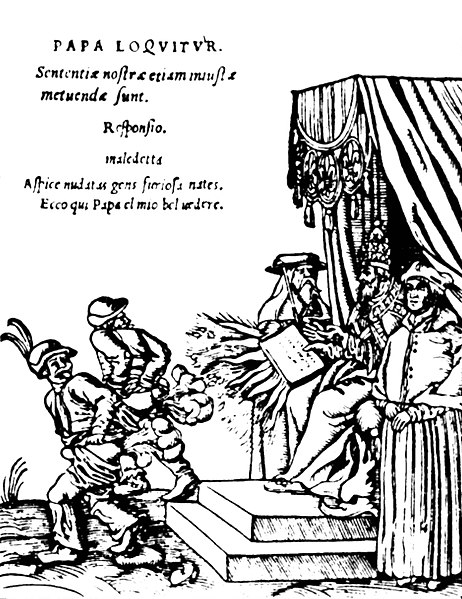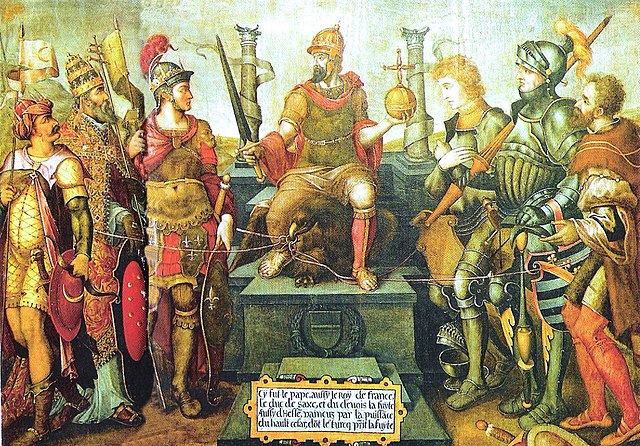Philip I, Landgrave of Hesse
Philip I, Landgrave of Hesse, nicknamed der Großmütige, was a German nobleman and champion of the Protestant Reformation, notable for being one of the most important of the early Protestant rulers in Germany. He was one of the main belligerents in the War of the Katzenelnbogen Succession.
Portrait by Hans Krell, 1534
Margarethe von der Saale, copy of a painting by an unknown artist
On 29 March 1545 Philipp read the pamphlet that contained this woodcut and wrote in a letter to John Frederick I, Elector of Saxony the next day that it pleased him very much. From a series of woodcuts (1545) usually referred to as the Papstspotbilder or Papstspottbilder in German or Depictions of the Papacy in English, by Lucas Cranach, commissioned by Martin Luther. Title: Kissing the Pope's Feet. German peasants respond to a papal bull of Pope Paul III. Caption reads: "Don't frighten us Pope, with your ban, and don't be such a furious man. Otherwise we shall turn around and show you our rears."
Allegory showing Charles V (centre) enthroned over his defeated enemies (from left to right): Suleiman the Magnificent, Pope Clement VII, Francis I, the Duke of Cleves, the Duke of Saxony and the Landgrave of Hesse
War of the Katzenelnbogen Succession
The War of the Katzenelnbogen Succession or the Katzenelnbogen Succession Struggle (1500–1557) was a war of succession about the County of Katzenelnbogen after the death of William II "the Younger", Landgrave of Hesse. In the end, Philip I, Landgrave of Hesse won the conflict. William I "the Rich", Count of Nassau-Siegen, known for being the father of William the Silent en Johann VI, Count of Nassau-Dillenburg, lost the war and got himself into deep financial troubles.
Katzenelnbogen in 1655
Tomb of William II "the Middle", Landgrave of Lower Hesse






